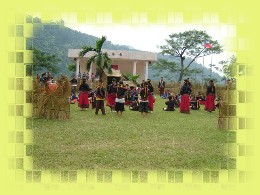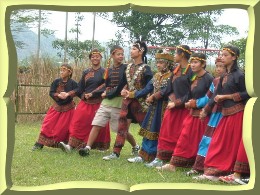Civilian Wedding Ceremony
¡@
|
Date: 11/17, 2005 |

Purpose of Exhibition:
In the past, the traditional wedding ceremonies of indigenous people were represented by wedding ceremonies of chieftain and nobles. In fact, there are also civilian wedding ceremonies. In this Project, the Little Digital Heroes will perform a civilian Wedding ceremony for a deeper understanding of tribal culture.

Introduction to Civilian Marriage
Whether civilian or nobles, the following three steps shall be required for marriage:
1. Inquiry (yi va lar)
If two lovers show a desire for marriage, one relative or matchmaker is invited to take some gifts to the girl¡¦s house and inquire about the marriage. Three or four days after, the matchmaker will feed back the results. If yes, they will discuss the data and condition of marriage. If no, the gifts are sent back.
2. Negotiation( pa Arlar fa le)
After confirmation, the families of both sides will discuss about the wedding date and betrothal gift, and make preparations for a wedding ceremony.
3. Wedding Ceremony (Pa putsele)
The betrothal gifts generally comprise two vats of rice wine, an iron boiler, a sword and blanket, or glass beads or pigs for richer clans. The ceremony begins overnight when the relatives and friends of both families come to celebrate them by singing and dancing. At this time, the bridegroom and bride will present their gifts to their friends. In addition, the girl¡¦s close relatives and matchmaker come to check the compliance of the betrothal gifts. Then, all relatives and friends come to the house of the bride, and dance in turn until the next morning. Then, the bride and bridegroom are accompanied into the bridal chamber, then embrace and kiss each other (pa sa se luche). On the next morning, the bride is escorted to the groom's house.
editor¡GAngie Dai¡BCi-yan Chen¡BSai-di Lin